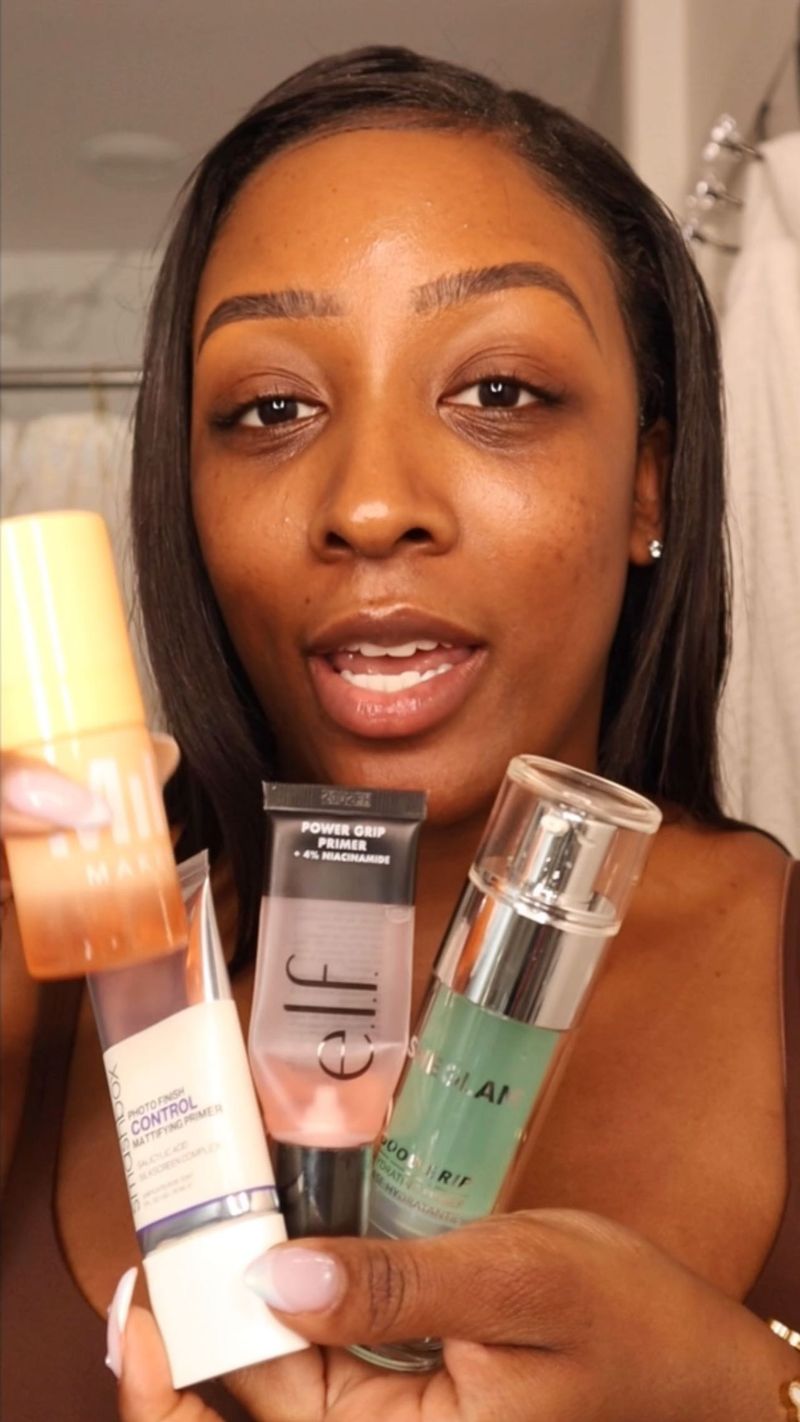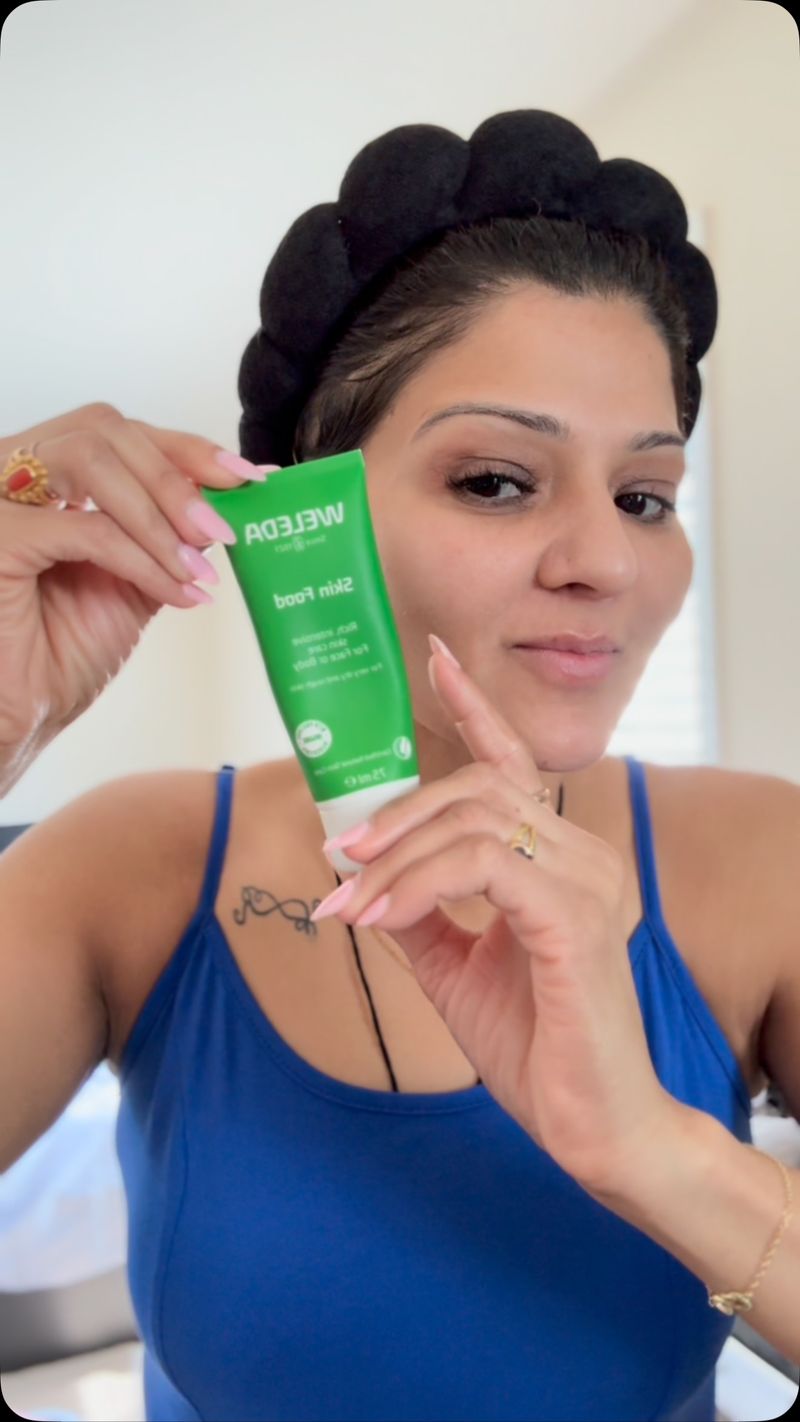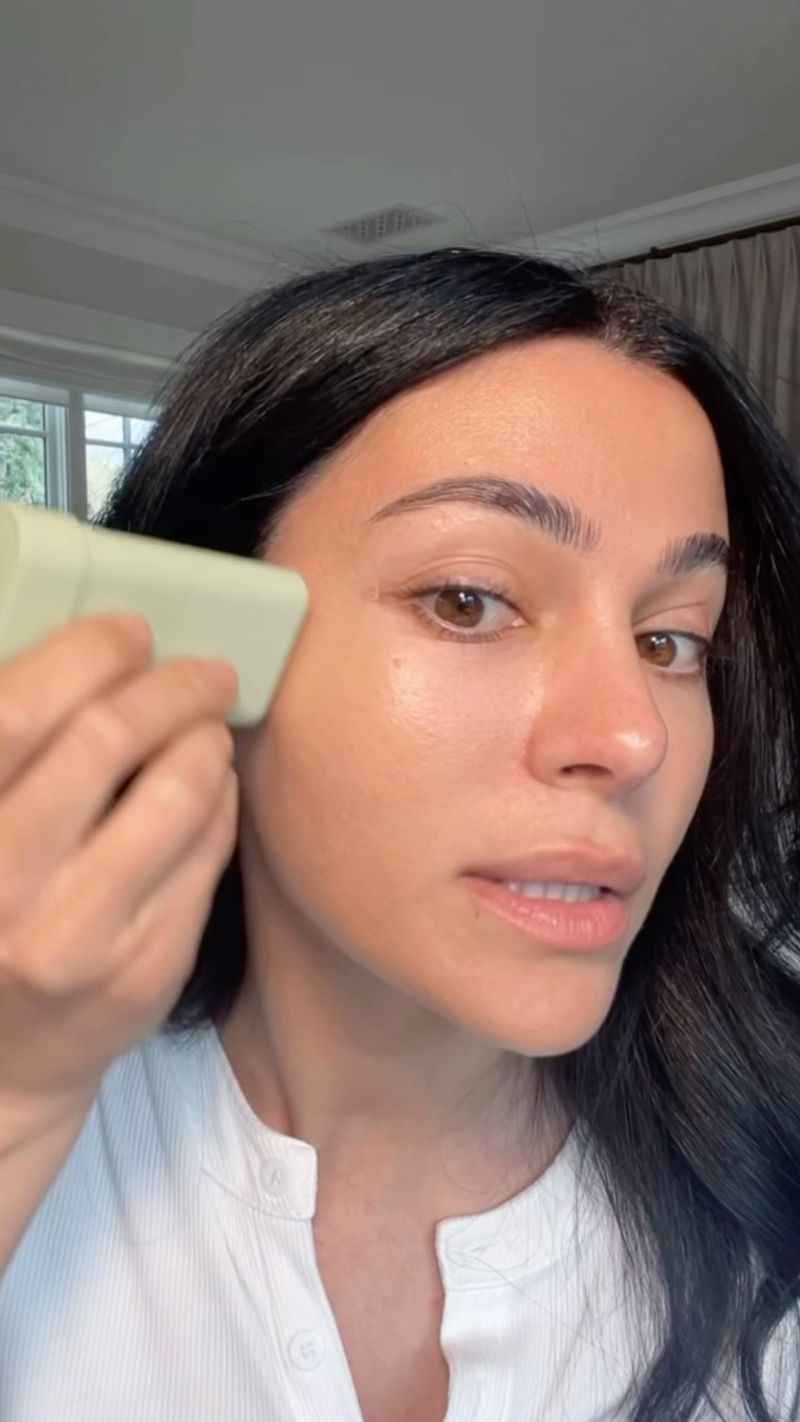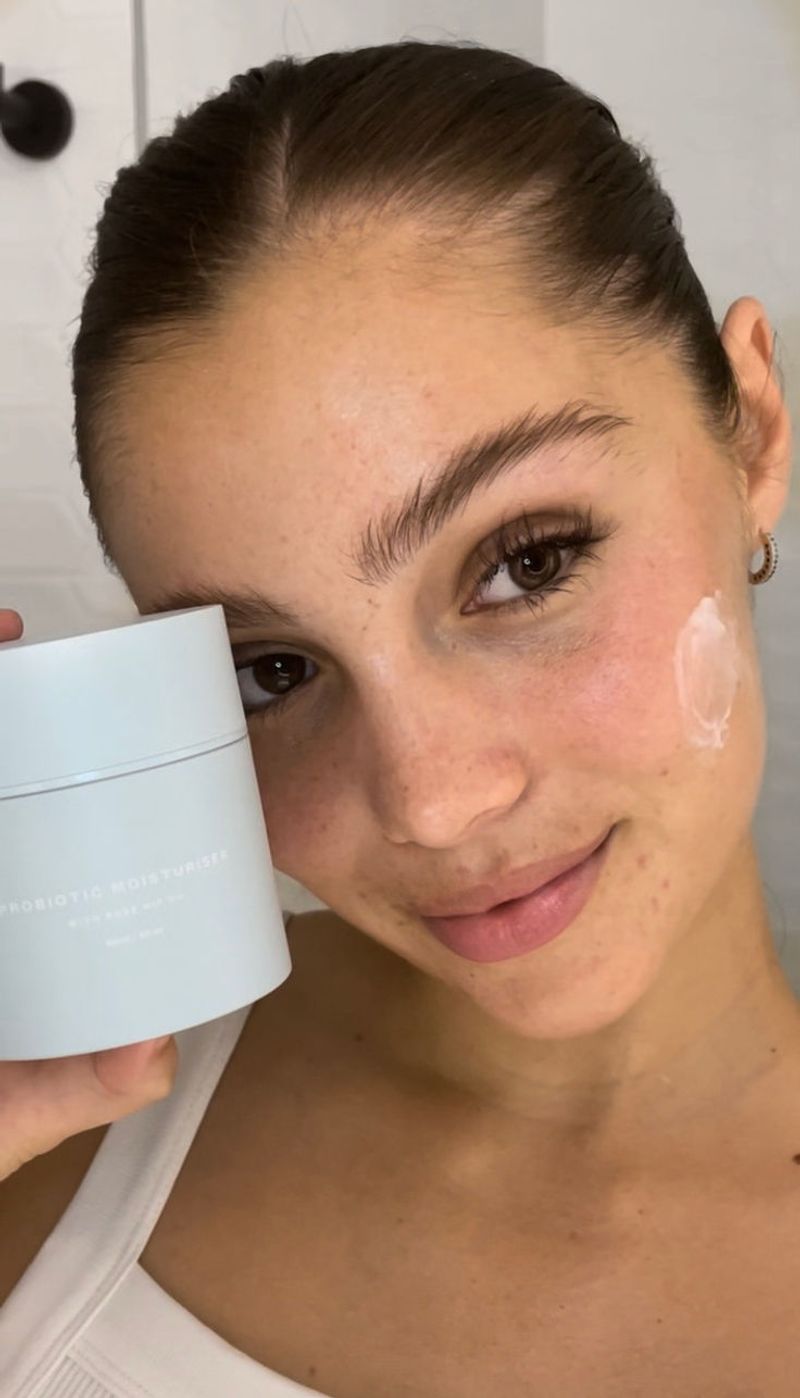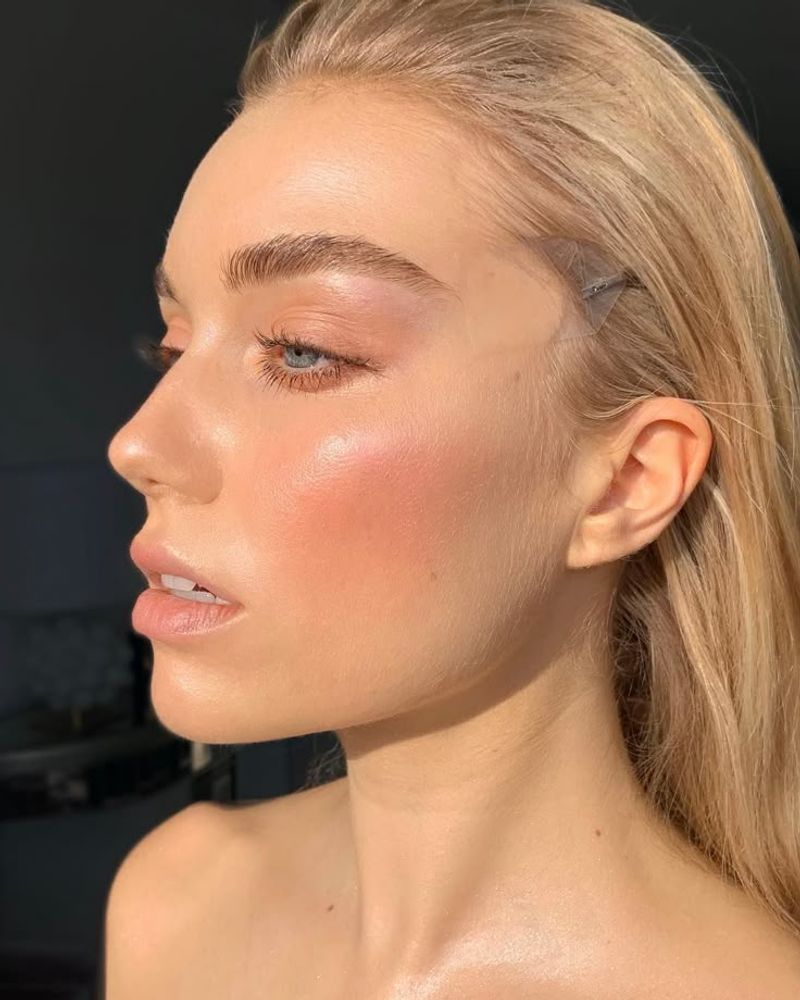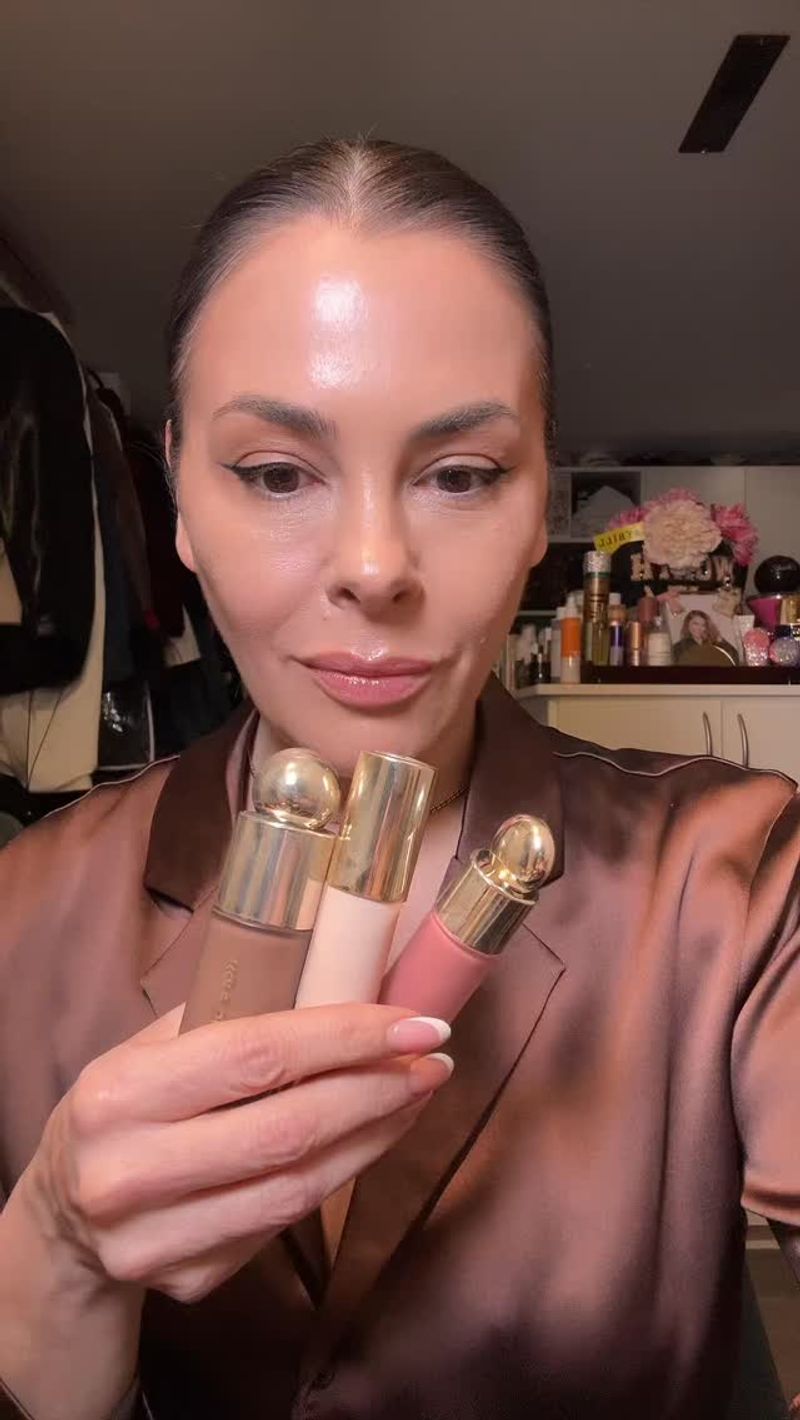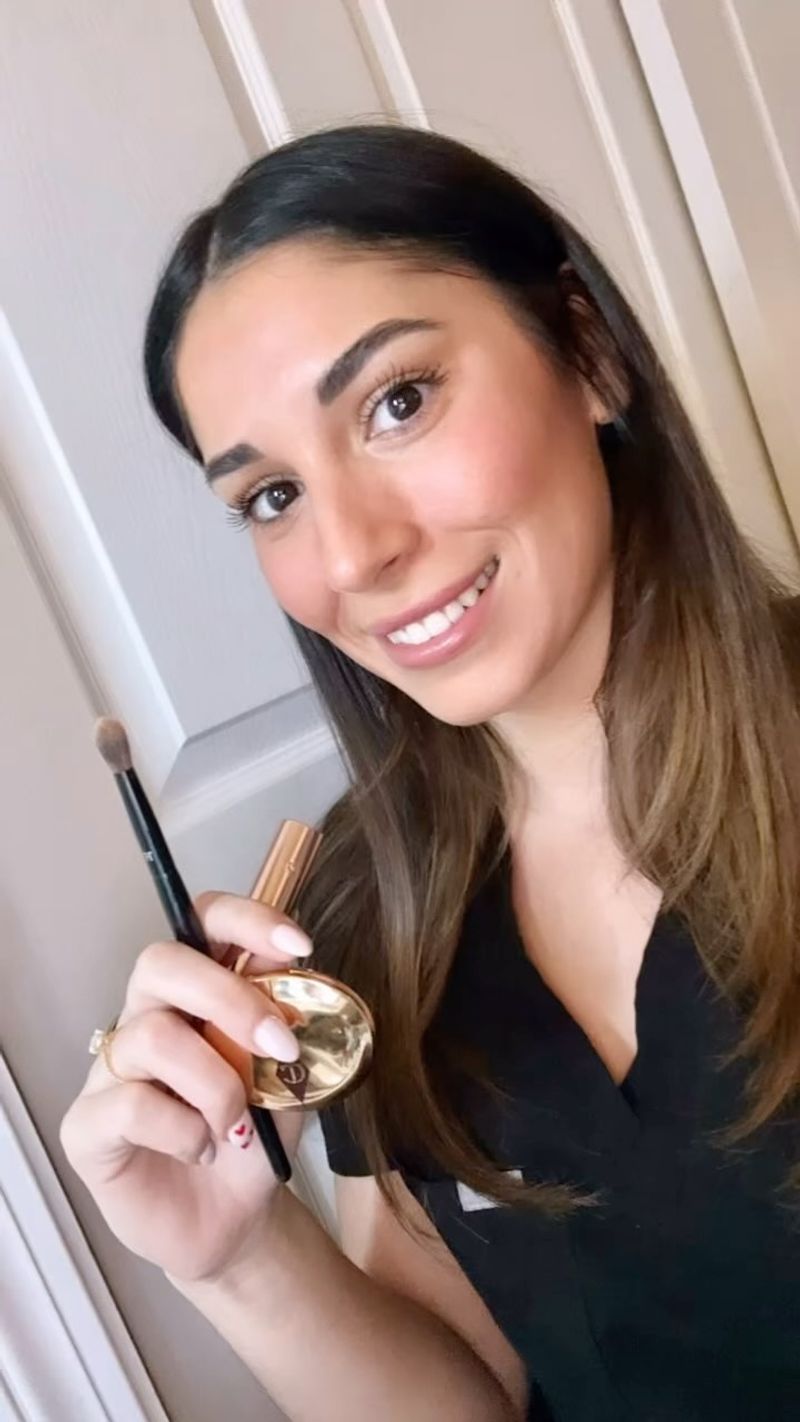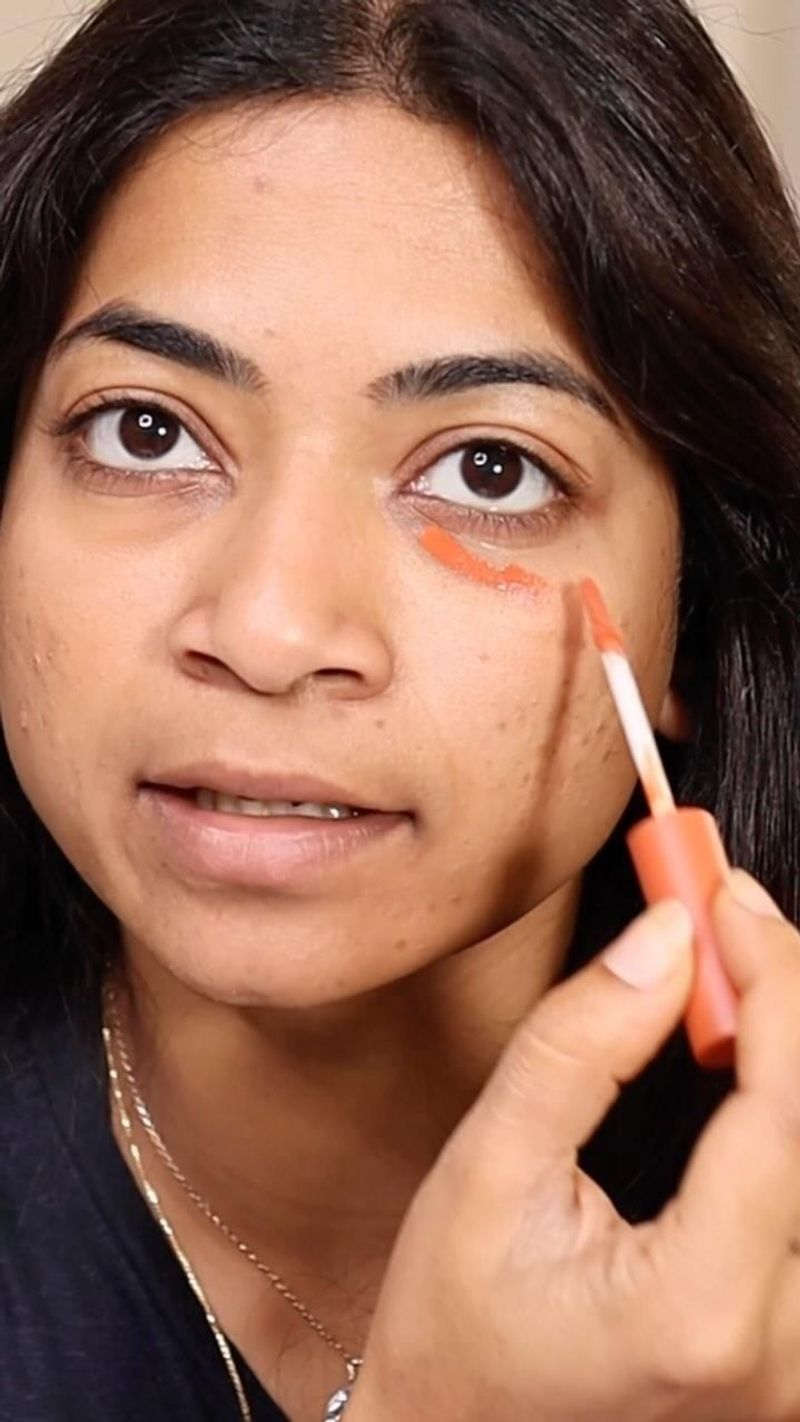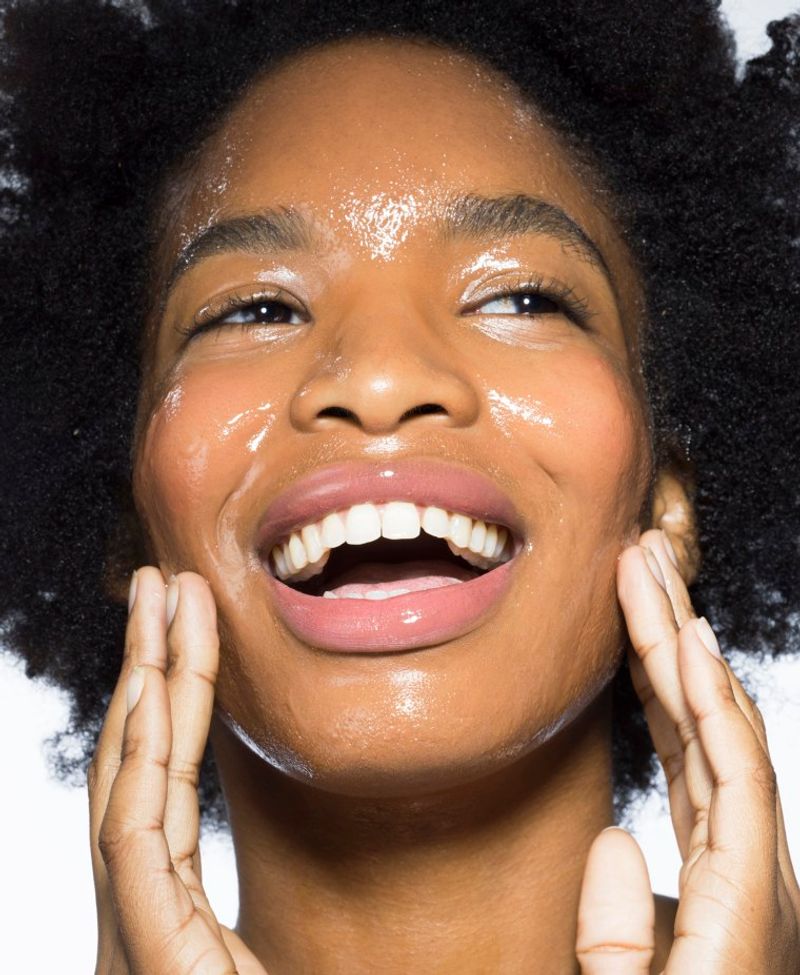10 Everyday Makeup Tips For People With Different Skin Types
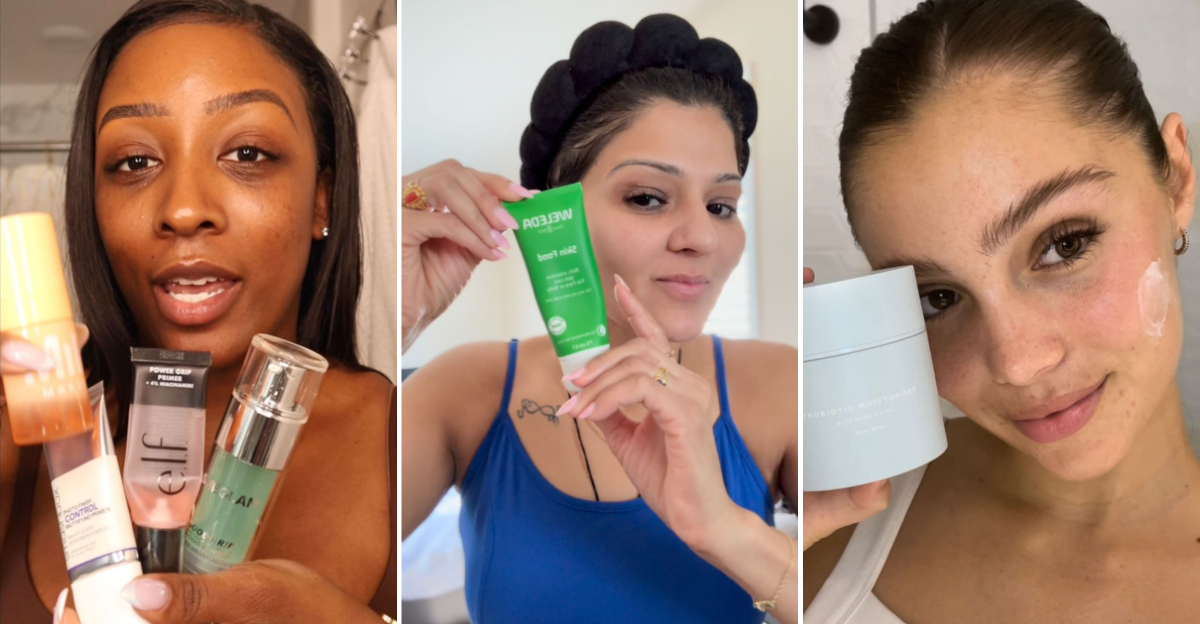
I’ve spent years figuring out why the same makeup routine fails miserably on different people.
The secret? It’s all about working with your unique skin type, not against it. Makeup isn’t one-size-fits-all, and what looks flawless on your friend might look cakey on you.
After countless experiments (and a few regrettable makeup days), I’ve gathered these tailored tips for every skin type.
1. Prep Oily Skin With Mattifying Primers
Oily skin demands special attention before makeup even touches your face. I always recommend grabbing a mattifying primer specifically designed to control excess shine. These primers work like oil-absorbing sponges that create a smooth canvas while keeping that midday shine away.
Apply it mostly in your T-zone – that’s your forehead, nose, and chin – where oil tends to party hardest. The right primer also helps your foundation stay put instead of sliding off by lunchtime. Some even contain ingredients like silica or clay that actively soak up oil throughout the day.
For extra staying power, try pressing (not rubbing) the primer into your skin with your fingertips. This technique ensures it really sinks in rather than sitting on top where it won’t do much good.
2. Hydrate Dry Skin Before Foundation
Makeup on dry skin can look flaky and highlight every patch of dryness. My game-changer was switching to a hydrating face oil or rich moisturizer 10 minutes before applying foundation. This creates a moisture barrier that keeps foundation from clinging to dry patches.
Skip setting powders when possible – they’re often too drying. Instead, reach for cream-based blushes, bronzers, and highlighters that add moisture while giving you that healthy glow. These formulas melt into dry skin rather than sitting on top and looking chalky.
Remember that hydration works from the inside too! I keep a water bottle nearby when doing my makeup, as staying hydrated makes a noticeable difference in how makeup sits on dry skin. Drinking water won’t instantly fix dryness, but it helps over time.
3. Master the Combination Skin Balancing Act
Dealing with combination skin used to drive me crazy until I figured out the zone defense technique. Your face isn’t one skin type – it’s a map of different needs. I apply mattifying primer only on my oily T-zone while using a hydrating one on my cheeks and other dry areas.
Multi-masking before makeup day works wonders too. Try using a clay mask on oily areas and a hydrating mask on dry patches the night before a big event. When it comes to foundation, I sometimes use two different formulas – a matte one for oily zones and a dewy one for dry areas.
Blotting papers are my secret weapon throughout the day. They remove excess oil without disturbing makeup or drying out already-parched areas. Keep them in your bag for quick touch-ups that won’t mess up your careful morning work.
4. Choose Gentle Products for Sensitive Skin
Sensitive skin needs extra care when it comes to makeup. My face used to turn red and irritated until I started checking ingredient lists like a detective. Mineral makeup became my best friend because it typically contains fewer potential irritants and provides natural-looking coverage without the itch.
Patch testing saved me from countless reactions. I always test new products on my jawline for 24 hours before applying them all over. Fragrance-free formulas are worth their weight in gold – artificial scents might make products smell nice, but they’re common triggers for sensitive skin.
Green-tinted primers help neutralize redness from irritation or rosacea. I apply a thin layer before foundation and find I need less coverage overall. Remember that brushes need regular cleaning too – product buildup can harbor bacteria that irritate sensitive skin.
5. Enhance Your Natural Glow for Normal Skin
Normal skin types hit the genetic jackpot! Without major concerns to address, you can focus on enhancing your natural beauty. I recommend lightweight tinted moisturizers instead of heavy foundations – they even out your skin tone while letting your natural texture shine through.
Cream highlighters applied to the high points of your face (cheekbones, brow bone, and cupid’s bow) create that coveted lit-from-within glow without looking artificial. Tap them in with your ring finger for the most natural effect. The warmth of your finger helps the product melt seamlessly into your skin.
Don’t forget that even normal skin needs protection! I always use makeup with SPF or apply sunscreen underneath. This prevents premature aging and maintains that balanced skin you’re blessed with. Normal skin can become dry or oily with seasonal changes, so adjust your routine slightly as needed.
6. Adapt Your Foundation for Aging Skin
Heavy, matte foundations can settle into fine lines and make mature skin look older. I’ve found that lightweight, hydrating foundations with a satin finish work miracles instead. They provide coverage while maintaining a natural, youthful appearance that moves with your expressions.
Primers specifically designed for mature skin fill in fine lines temporarily, creating a smoother canvas for foundation. Look for ones containing hyaluronic acid or collagen-boosting ingredients. Apply foundation with a damp makeup sponge using a bouncing motion rather than dragging or pulling at the skin.
Setting spray has replaced powder in my routine for mature skin. It locks makeup in place without the drying effect that can emphasize texture. If you must use powder, apply it sparingly only in areas that get shiny, using a fluffy brush for the lightest possible application.
7. Control Breakouts While Wearing Makeup
Acne-prone skin needs special handling to prevent makeup from making breakouts worse. Non-comedogenic products changed my makeup game completely – they’re specifically formulated not to clog pores. Always check labels for this magic word before purchasing foundation or concealer.
Salicylic acid primers serve double duty by creating a smooth base while treating existing breakouts and preventing new ones. I spot-apply concealer only where needed instead of layering products all over. This targeted approach gives coverage without suffocating skin that’s already struggling.
Washing makeup brushes weekly with antibacterial soap prevents bacteria transfer that can worsen acne. I also keep alcohol-free makeup wipes handy for removing makeup immediately after workouts. Sweat trapped under makeup is a recipe for more breakouts, so never wait hours to cleanse after sweating.
8. Perfect Your Base With Custom Color Correction
Color correction sounds complicated but revolutionized my makeup routine. Different colored concealers target specific issues: green neutralizes redness from rosacea or acne, purple brightens sallow or yellow-toned skin, and peach or orange cancels out dark circles and hyperpigmentation on deeper skin tones.
The key is using the tiniest amount possible. I apply color corrector before foundation, using a small concealer brush for precise application only where needed. Then I tap (never rub) the product in with my ring finger until it’s nearly invisible before applying foundation over top.
For extremely red areas like active breakouts, I layer by applying color corrector, a thin layer of foundation, then spot concealer if needed. This building technique provides coverage without the heavy, cakey look that comes from trying to cover everything with one thick layer of product.
9. Protect Skin From Makeup With Proper Removal
Even the perfect makeup routine can damage skin if not removed properly. Double cleansing transformed my skin’s health – first with an oil-based cleanser to dissolve makeup and sunscreen, followed by a gentle water-based cleanser to clean the skin itself. This prevents residue that can cause breakouts and dullness.
Micellar water on a cotton pad works great for eye makeup removal without harsh rubbing. I hold the soaked pad against my eye for 30 seconds before gently wiping away – the makeup dissolves with minimal effort. For waterproof mascara, dedicated eye makeup remover prevents lash loss from excessive rubbing.
Give your skin makeup-free days whenever possible. I try for at least one day a week to let my skin breathe and recover. On these days, I focus on hydration and treatment products that address my specific skin concerns without the barrier of makeup.
10. Adapt Your Routine to Seasonal Skin Changes
Our skin changes with the seasons, and our makeup should too. During winter months, my skin gets drier, so I switch to cream-based products and more hydrating foundations. I also apply facial oil under my moisturizer before makeup to prevent the dreaded winter flakiness.
Summer brings humidity and increased oil production for many. I scale back to tinted moisturizer or BB cream and use waterproof products for eye makeup. Setting powder becomes more important in my T-zone, and I keep blotting papers handy for midday touch-ups without adding more product.
Spring and fall are transition seasons requiring a mix of techniques. I pay attention to how my skin feels each morning and adjust accordingly – sometimes using my winter routine on colder days and summer routine on warmer ones. The flexibility to adapt based on both weather and how your skin behaves is more important than rigidly following seasonal rules.

